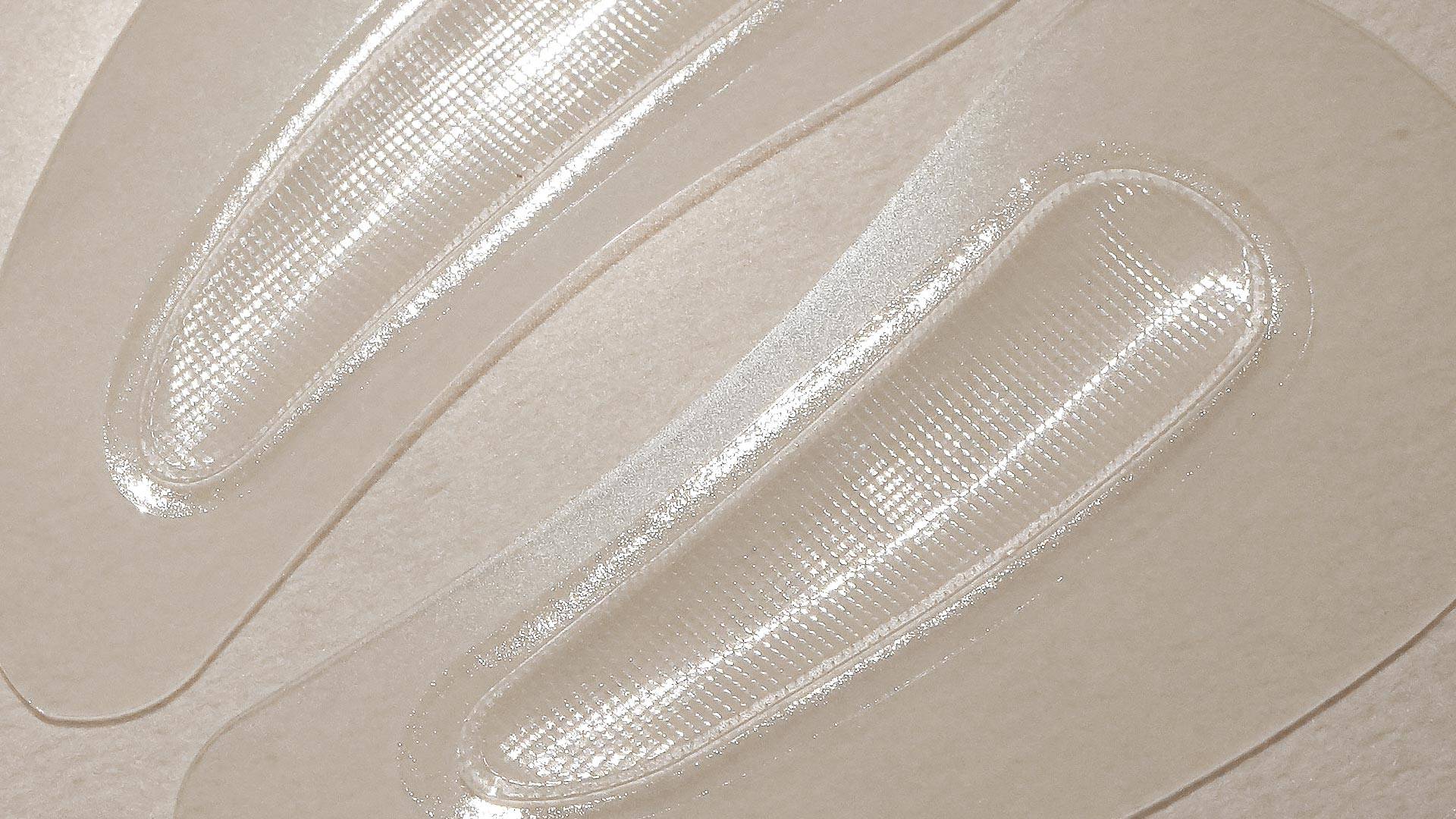
What are Pockmarks?
Intro
Every minute, our body works through a natural cycle of regenerating new skin cells and shedding those that have died. The skin is the body's largest organ, and a system this complex means everyone’s skin requires different types of care or treatment. When it comes to breakouts, more issues can arise than pimples or acne. Those who were prone to breakouts of pimples as teenagers are more likely to experience pockmarks in adulthood.
Pockmarks are small, concave scars that are dark shades and can protrude deep into the skin. They give off the appearance of blemishes or pimples that are typically caused by severe acne, or illnesses such as chicken pox. For some, these scars go away on their own over time. However, that isn’t always the case and further treatment and actions are sometimes required for the condition to be tamed or removed entirely.
No one should have to let these unwanted scars ruin their events and thankfully, the industry has discovered several solutions in the past several years that allow those with pockmarks to take matters into their hands and regain control of the timeline.
Treatments
Consult a Specialist
Since everyone’s skin requires different levels of care and will react to treatments differently, seeing a skincare professional should always remain in the back of your mind. If at any time, you feel a condition is worsening rather than getting better and it’s becoming too difficult to ignore in your daily life, a medical professional will often be able to ease your concerns.
Receiving skin exams is generally a great place to start. These will be able to trace the issue so that the next steps can be prepping your skin for treatment. If you have acne on top of your pockmarks, for example, your acne would need to be treated as a separate issue before even treating the pockmarks.
During the initial process, your doctor will also run through different treatment options, as well as which procedures are covered by insurance, if at all. Unfortunately, cosmetic procedures such as these are not typically covered by medical providers. These will often be an out-of-pocket cost for many patients.
Ablative & Non-Ablative Laser Resurfacing
Now that we got the boring, yet complex health coverage discussion out of the way, what treatments are available to target pockmarks? You might be overwhelmed at the next step of the process by all the options the industry has. While this is better than having few options, your doctor will be able to determine which treatment will provide the best-desired results for your condition and skin type.
The main difference between laser treatments such as ablative and non-ablative resurfacing is that ablative treatments are more invasive to the skin. Being the most invasive of the laser resurfacing treatments available, ablative resurfacing removes the thin layers of the affected skin.
A common method that is used is FAST or Focal Acne Scar Treatment. This procedure is specifically meant for those with acne and scar-related pockmarks. There are, however, side effects to this procedure to take into accounts such as skin pigmentation changes and redness/inflammation.
Non-ablative, on the other hand, is less invasive while also not being as effective. The recovery period is appealing to many, as it requires far less of a rest period, and the individual can resume their daily routines soon after treatment. When experiencing ablative treatments, one to two weeks is often recommended as adequate recovery time, which can be hard for many to take off work and hold off on responsibilities for two weeks. Despite this temporary inconvenience, the results are worth it as they can last for years without requiring additional treatment.
This less invasive procedure works to stimulate the skin’s surface, increasing the production of collagen rather than removing the affected layers of the skin. This increase in collagen formation helps to reduce the effects of pockmarks, but doesn’t last as long, nor will you see results right away.
Non-ablative laser resurfacing also comes with its side effects, such as the formation of new scars in different areas, redness/inflammation, and blisters on the skin. In the end, it depends on the particular skin issue and what works best for each individual in terms of recovery periods and potential side effects.
Chemical Peels
Similar to ablative laser resurfacing, albeit less invasive, chemical peels work to remove the top layer of the skin, encouraging the regeneration of new skin cells. This is essentially the exfoliation process, which is typically recommended to perform at least a couple of times per week for healthy skin.
It is important to note that this form of treatment only removes the epidermis or the outermost layer of the skin. This can also help to minimize aging signs such as wrinkles and any other scars that require attention.
Whether you’re going into the office or performing at-home treatments, ingredients to look out for to see desired results include glycolic acid, salicylic acid, and trichloroacetic acid (TCA). As with most treatments, there are potential side effects to consider when looking into chemical peels, including skin peeling and irritation.
Lastly, this treatment isn’t going to be as beneficial in the long term, unlike ablative resurfacing. Chemical peels are required consistently to remain effective and treat the affected area. Every two to four weeks is generally recommended as a treatment plan for this option.
Facial Massages
Facial massages are a special form of treatment in the sense that they don’t work to directly remove scars, but are rather part of an overall treatment solution that complements other forms of scar therapy. By getting anywhere from weekly to monthly facial massages, results have been found in the form of increased skin circulation, toxin removal, and less inflammation overall.
The best part about utilizing facial massage therapy? There haven’t been any known side effects to this procedure. No matter how many massages you get each week or month, you don’t have to worry about doing any further damage to your skin!
Microneedling
In the past several years, microneedling has become a modern trend in the skincare industry. A versatile treatment, microneedling helps with many different types of skincare issues, pockmarks not excluded.
During the microneedling process, the needles puncture the affected area of the skin. These pockmark wounds soon heal, allowing the skin to naturally produce more collagen to fill the wounds, reducing the overall appearance of these scars.
Microneedling does come with certain side effects, such as the bruising, swelling, and potential risk of infection. Depology Deepcare+ Serum-InfusedMicrodart Patches are a great alternative to costly medical procedures and office visits, as well as come with fewer side effects in the packaging.
The Deepcare+ formula is designed to multi-task in treating aging signs while also maintaining skin hydration after a single application. One thousand micro darts are meticulously placed within each package, effectively providing more area coverage than other patches.
Micro & Traditional Dermabrasion
There are two forms of dermabrasion that are commonly done to help with pockmarks, each having its characteristics and side effects. The main differentiation between the two is that microdermabrasion removes the epidermis, while traditional dermabrasion treatment targets both the epidermis and dermis layers of the skin, penetrating deeper. These procedures are similar to laser resurfacing treatments and come with their benefits and side effects.
When undergoing microdermabrasion, this is often done by specialists who use abrasive ingredients to remove the dead skin cells from the epidermis. Due to the “micro” in the name, this treatment is usually better for those with smaller scars.
Unlike other procedures and options, this needs to be done regularly to achieve desired results. Pros to microdermabrasion are the option of being able to perform at home or with a specialist. There are also not known to be major side effects when choosing this form of treatment.
Regular dermabrasion, on the other hand, does have side effects attached to the result. This option is more invasive, as both the outermost and middle layers of the skin are penetrated. Due to the intensity of the procedure, where a sanding machine is used to remove parts of the outer and middle layers of the skin, anesthesia is often administered.
Unlike its micro counterpart, this option is always done by a specialist due to the potential risks involved. Despite its effectiveness at penetrating deeper, this treatment can only target scars that go so deep. If you have severe pockmarks, another type of treatment with fewer risks may be a better option. Side effects to consider when opting for regular dermabrasion are enlarged pores, new scar formation, and skin infection.
Punch Excisions
If you’re not looking for too many doctor’s office visits, punch excisions may be a great alternative if none of the above options have been called out to you thus far. With only a single one-time treatment and no potential side effects to be concerned about, this punch remedy has been sought by many.
Once in the operating room, a specialist uses a cookie-cutter tool called a “punch” to remove the pockmarks on the skin. This tool is designed to be larger than the actual size of the pockmark scars and can sometimes leave a lighter scar at the surface level. However, this will ultimately heal and smoother healthier skin will be on the horizon.
Skin Fillers
During the process of inserting skin fillers, collagen and fat-based substances are injected into the affected area containing pockmarks and scars. While skin fillers don’t get rid of the scars entirely, skin fillers are designed with the intent of plumping the skin’s overall appearance.
Lasting only up to six months before requiring further injections, it may be a one-time treatment depending on the types of fillers used. There are several factors that can play a role in this decision, such as skin type and sensitivity. Unlike punch excisions, skin fillers are known to present side effects such as allergic reactions and skin irritation.
Conclusion
Self-diagnosing is never a recommended solution, especially when it comes to your skin’s health. If you ever have lingering questions or feel something isn’t normal, you should consult a trusted specialist right away before an issue persists and gets worse. By acting early and going through your options, you’ll find the method of treatment that works best for your skin type and for your mental health.













